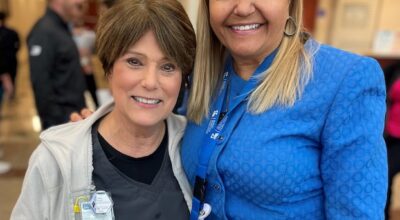Managing risk is way to help protect public
Published 12:00 am Wednesday, November 18, 1998
L’Observateur / November 18, 1998
Managing risk is way to help protect public
Without a doubt, the River Parishes region offers a textbook for emergency risk planners, confronted as they are with a multitude of possibilities for disaster. Possibly the largest concentration ofpetrochemical industries in one region in the world is right here.
At Monday’s meeting of the St. Charles Parish Council, representatives ofthe parish’s petrochemical industries presented the results of their year- long dialogue with government, private business, industry and media to develop a risk-management plan to the U.S. Environmental ProtectionAgency.
The work is due by June 1999; however, the work is completed already in St. Charles Parish. The promptness was a reflection of the existing closerelationship between government and industry.
The EPA’s Risk Management Program regulation requires facilities which use, make or store certain designated chemicals to identify the hazards and determine the public risk with accidental releases. The regulationlikewise mandates the facilities to establish preventative programs and also procedures to minimize public impact, as well as compile a history of accidents involving these certain chemicals over the past five years.
Also involved in the project was a critique of past events and of current procedures and plans and develop and document improvements, demonstrating their ability to handle the job, should an accident occur.
The industries involved in the St. Charles Parish project include thefollowing: IMC-Agrico, Koch Nitrogen, Monsanto Company, Occidental Chemical, Shell Chemical Company, TransAmerican Refining, Union Carbide Corporation, Witco Corporation and MOTIVA Norco Refining Company.
Working closely with the parish’s Department of Emergency Operations, its director, Tab Troxler, and his staff, the panel made use of its already- close relationship to develop this response to the EPA in record time.
Troxler, at the Monday night meeting, outlined some facets of that close relationship, including their hotline to every major industry. In order toalert the public in times of actual emergency, the EOC also operates their cable-TV audio override, Firstcall emergency phone system, government access channel, local media and 33 outdoor sirens, all aimed at making the public aware of an emergency.
He announced as well that beginning Dec. 3 and continuing on the firstThursday of every month at 11:55 a.m., the EOC will test its audio overrideon Cox Cable.
“We have the best-trained EOC (Emergency Operations Center) in the state,” Troxler declared. He also mentioned the St. Charles Parish EOC isone of the few nationwide open and operating 24-hours a day, seven days a week.
It is illustrative that the system is already largely in place, where many other places in the country have yet to establish these close ties between government, industry and the people.
“St. Charles Parish is our home,” Jim Kimes of Shell Chemical, “And weare committed to doing everything we can to keep it a safe place to live, work and raise our families.”Acknowledging that there is always room for improvement, it appears this team is already leading the way toward making this area and its people as safe as possible.
Accidents will happen. Hopefully, danger can be cut to a minimum.
L’Observateur
Copyright © 1998, Wick Communications, Inc.
Internet services provided by NeoSoft.
Best viewed with 3.0 or higher




